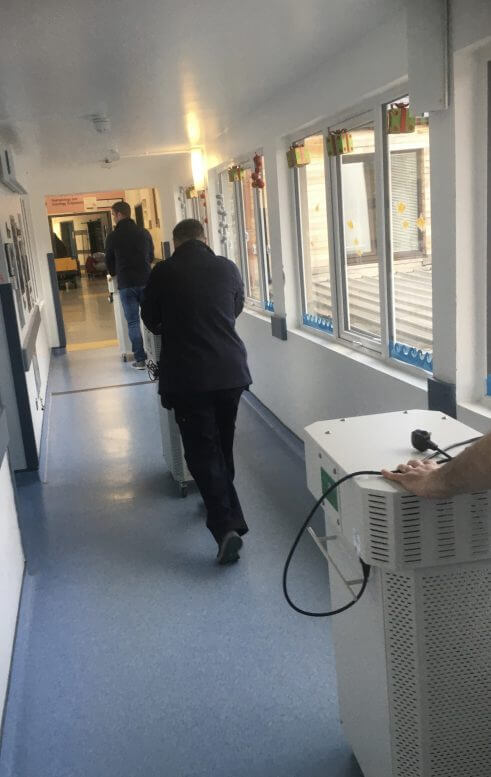General Ward
Many hospital general ward areas often have no or poor mechanical ventilation.
How do you then create Ultra Clean air when faced with this challenge?
1. General Ward Ultra Clean Air
Overcoming the challenge creating Ultra Clean air in existing General Wards.
The design ethos has been to rely on open windows in a bid to keep construction costs low. This mostly works unless hospitals are faced with disease outbreaks, such as aspergillus, or as currently with coronavirus. Most hospital patients have some degree of compromised immunity, either due to their disease process or to the treatment they are receiving. Anybody who has an anaesthetic is classed as immune compromised for at least 48 hours post operation and many are surprised to realise that pregnancy implies a similar vulnerability.
The actual air dilution required to prevent disease in most ward areas is much lower than is required in an area such as accident and emergency. The high grade filtration offered by Air Sentry® combined with good actual air handling capability, means our system can offer vastly improve any general ward area at a very low implementation cost.

2. Cohort or CPAP wards
Airsentry® is able to offer significant reductions in risk for wards used for aerosol generating procedures such as CPAP or BIPAP.
By maintaining the general ward air as Ultra Clean™, Air Sentry® removes all airborne risk in the general ward air. This means that aerosol risk is specifically located where it can be visualised, near the patient, and there is no transfer of droplet nuclei or other particles around the ward area. Staff wearing good respiratory protection and following infection control guidance are therefore at very low to near zero risk of contracting an infection.
Outline example of a Cohort Ward
See how the Air Sentry system works by clicking the link below:
Air Sentry Product Brochure
Read full product specification and case studies.
